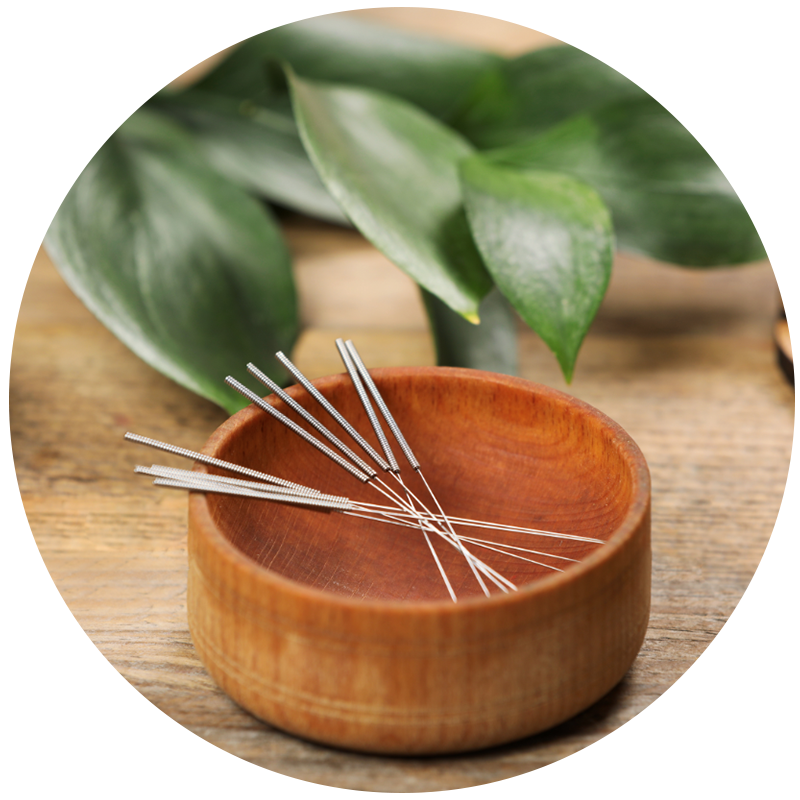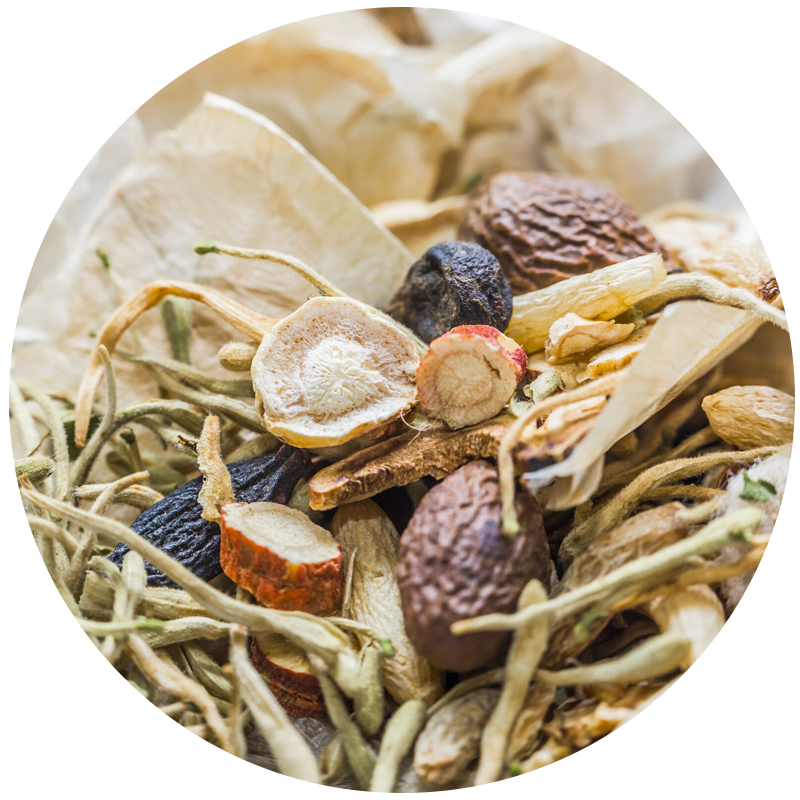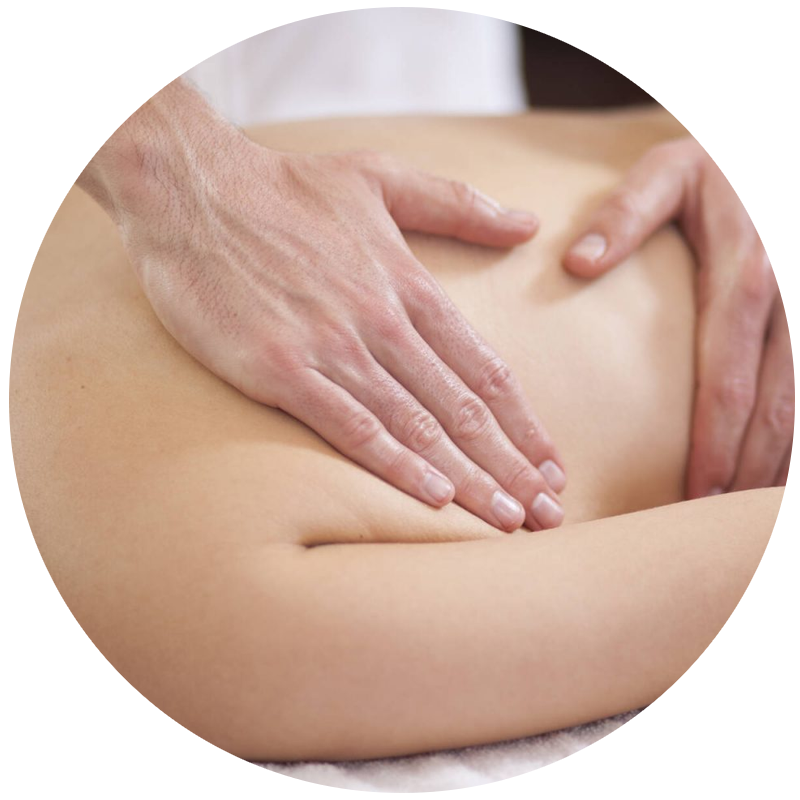About
Integrated Manual Therapist is the use of a variety of individualised manual therapy techniques and modalities to address a patient's physical concerns.
Qualifications include: Remedial Massage Therapy, Sport Massage Therapy, Pressure point techniques such as Shiatsu and Tui Na, Muscle Energy Technique.
I make no claims of cures for the conditions listed above. The objective of manual therapy approachs is to ease muscular tension and thereby assisting the general physical alignment by rebalancing the opposing muscles and structures. The key is to support the body’s own healing processes, create ease of movement and manage pain.
About
Integrated Manual Therapist is the use of a variety of individualised manual therapy techniques and modalities to address a patient's physical concerns.
Qualifications include: Remedial Massage Therapy, Sport Massage Therapy, Pressure point techniques such as Shiatsu and Tui Na, Muscle Energy Technique.
I make no claims of cures for the conditions listed above. The objective of manual therapy approachs is to ease muscular tension and thereby assisting the general physical alignment by rebalancing the opposing muscles and structures. The key is to support the body’s own healing processes, create ease of movement and manage pain.
Treatment
There are numerous and varied approaches to treating the physical body. Over the years, a practitioner learns a wide range of techniques and accumulates clinical experience to cultivate their own unique style of manual, pressure point and massage techniques. An integrated and experienced practitioner offers a safe and effective approach to health. addressing all sorts of physical conditions, whether muscular, tendinous, nervous or rheumatic in nature. A Fully certified, well informed, and experienced therapist has much to offer in the way of, pain management, lifestyle and general well being.
It is imperative that the therapist you seek is registered, highly educated, understands Anatomy, Physiology, and Pathology. Able to decipher C.T, M.R.I. and X-ray reports, and discern the wide variety of possible complications and conditions, to ensure a safe and effective approach.
Painful conditions may arise from local tissue, or radiate from other parts of the body. Sciatic pain may appear in the leg, but in fact, lumbar or pelvic issues may be the causing factor. A simple shoulder pain may appear local in nature, but may actually emanate from a gallbladder stone. An experienced practitioner must be able to discern such risks and know their limitations and refer you on for further investigation when required.
With over 29 years of clinical experience, I have adopted particular world views on treating the physical body. Techniques include; Western Remedial Massage, Sports Massage, Japanese Shiatsu, and Chinese Tui Na, cupping and Gua-Sha therapies. They are non- invasive and clinically safe..
Remedial Massage Therapy is a Western based approach to massage Therapy. It involves a deep understanding of Anatomy, Physiology and general Western bioscience. It is imperative for a practitioner to approach the physical state of the body with an understanding of the wide range of possible physical conditions and come up with the correct diagnosis. Consideration must be given to the myriad of possible complications. Conditions may arise post-operatively or as a result of long term neglect of pre-existing trauma and injury.
Muscle Energy Technique (MET):
is a Therapeutic approach that is governed by a strict and linear manual diagnostic process. When successfully applied to sciatic-like symptoms, sharp lumbar or mid-spinal painful conditions and painful neck issues.
For Lumbar Spine, the process requires a deep understanding of the sacrum’s orientation within the ilium (pelvic girdle), its alignment, or lack there of in relation to the 5th Lumbar vertebrae. Once this relationship is clearly diagnosed, appropriate non-manipulative technique is applied.
A strictly NON manipulative techniques are utilised. The body is placed in a specific position that isolates a single intervertebral muscle (multifidus muscle group). The patient uses minimal resistance to activate the isolated muscle,
In a Gentle, safe and effective manner, this technique addresses one spinal segment at a time and enables local tight muscles to ease and thereby has the tendency to release spinal spasms and misalignments that often lead to Sciatic-like pain.
Japanese Shiatsu and Chinese Tui-Na have been used for over thousands of years as manual techniques.
Traditional Shiatsu and Tui-Na are oil free approaches, and often performed over cotton, a shirt to reduces friction. This provides for greater control when using pressure points.
For thousands of years Oriental Medicine utilised pressure points techniques to address the body and mind as a whole.
Oriental styles of pressure point massage and Acupuncture are carried out within their holistic contextual theoretical basis, and in the way they were intended and developed over thousands of years.
Glass cups are applied to the skin. A flame is introduced into the cup, which draws out the oxygen within it to creates the necessary vacuum for the application of the cup onto the skin. The cups are not hot and do not cause burns, they do however, leave painless cupping marks for several days after the session. Historically ancient Egypt, China, Africa and Europe are all known for their use of cupping techniques.
Cups induce negative pressure that stimulate muscle fibres and spindles (muscle-nerve receptors), They act on fascia (connective tissue) and may assist woth long standing injuries by invigorating local blood flow, stimulate tissue oxygenation through invigurating local blood flow and drain toxin according to Traditional Chinese Medicine theory.
Gua-sha is a Chinese skin scraping technique. It may assist pain management through removing blood stasis from aching muscles according to Traditional Chinese Medicine.
Registered practitioner of Traditional Chinese Medicine
Personalised expert carefor your mind.
Balance Method, TUNG acupuncture & TCM styles.
Traditional Chinese Medicinal Herbs.
Offering a personalised approach to manual therapy.
Neuro-Linguistic Programming. Overcome emotional obstacles, live a better life.

Dr. Ehud Udi Tal
Registered Practitioner of Traditional Chinese Medicine
MAppSc.(Herbal), BHlthSc.(Acup), Dip.M (Remedial Massage Therapist), AHPRA & CMBA Registered, ATMS Member. Master practitioner of Neuro-Linguistic Programming (NLP), Master Hypnotist, Certification, Training.

Back Pain & Sciatica
Sciatica, sport related pain, general pain management and sacral realignment.
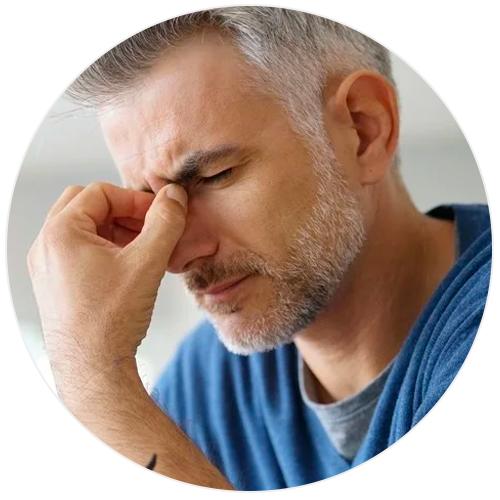
Headaches
Migraine, cluster headaches, tension headache and whiplash.

Anxiety & Stress
Emotional distress, herbal support (depression & anxiety), NLP and hypnotherapy.

Women Issues
PMS, amenorrhoea, , painful periods, PCOS, fertility support, obstetric support, morning sickness and menopausal syndrome.
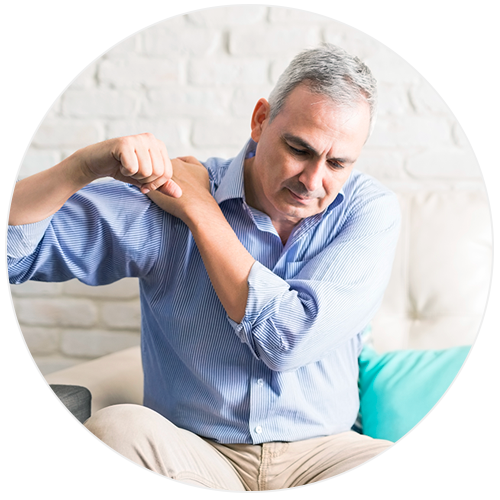
Chronic Pain
Bone, muscle & nerve pain, carpal tunnel, neck pain, fibromyalgia, spinal issues & stiffness, arthritis and joint pain.
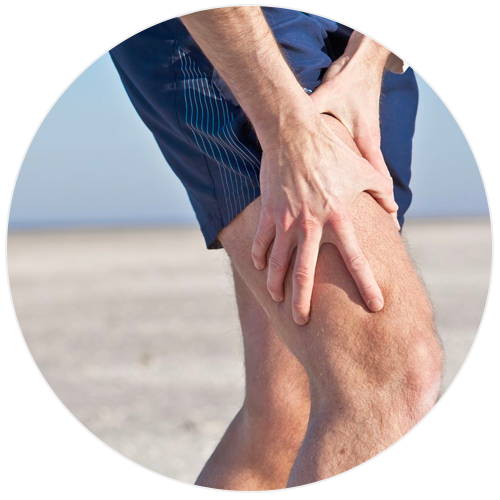
Sport Injuries
General sport injuries, strains, post fracture and bone healing.
Acupuncture Scientific Peer reviews
-
“Acupuncture for Chronic Low Back Pain: A Randomized Controlled Trial” – Annals of Internal Medicine, published by American College of Physicians, found that acupuncture was effective in reducing chronic low back pain compared to usual care or sham acupuncture. “Acupuncture for Chronic Low Back Pain: A Randomized Controlled Trial” – Cherkin DC, Sherman KJ, Avins AL, et al. Ann Intern Med. 2009; 151(3): 181-191
-
“Acupuncture for Treatment of Menopausal Hot Flashes: A Randomized Clinical Trial” – JAMA Internal Medicine, published by American Medical Association, found that acupuncture was an effective and safe treatment for reducing menopausal hot flashes. “Acupuncture for Treatment of Menopausal Hot Flashes: A Randomized Clinical Trial” – Avis NE, Coeytaux RR, Isom S, et al. JAMA Intern Med. 2016; 176(3): 308-318.
-
“Acupuncture for Chronic Pain: Update of an Individual Patient Data Meta-Analysis” – The Journal of Pain, published by American Pain Society, found that acupuncture was effective in reducing chronic pain compared to sham acupuncture and usual care. “Acupuncture for Chronic Pain: Update of an Individual Patient Data Meta-Analysis” – Vickers AJ, Vertosick EA, Lewith G, et al. J Pain. 2018; 19(5): 455-474.
-
“Acupuncture for Postoperative Pain Management: A Systematic Review and Meta-Analysis” – Evidence-Based Complementary and Alternative Medicine, published by Hindawi, found that acupuncture was an effective adjuvant therapy for postoperative pain management. “Acupuncture for Postoperative Pain Management: A Systematic Review and Meta-Analysis” – Sun Y, Gan TJ, Dubose JW, et al. Evid Based Complement Alternat Med. 2015; 2015: 1-10.
-
“Acupuncture for cancer pain and symptom management in palliative medicine: systematic review and meta-analysis” – Medicine, published by Wolters Kluwer Health, found that acupuncture was an effective complementary therapy for managing cancer-related pain and symptoms in palliative care. “Acupuncture for cancer pain and symptom management in palliative medicine: systematic review and meta-analysis” – Zhang Y, Lin L, Li H, et al. Medicine (Baltimore). 2020; 99(36): e22034.
-
“Acupuncture for chronic obstructive pulmonary disease (COPD): a multicenter, randomized, double-blind, control trial” – Trials, published by BioMed Central, found that acupuncture was an effective complementary therapy for improving lung function, reducing dyspnea, and enhancing quality of life in patients with COPD. “Acupuncture for cancer pain and symptom management in palliative medicine: systematic review and meta-analysis” – Zhang Y, Lin L, Li H, et al. Medicine (Baltimore). 2020; 99(36): e22034. and “Acupuncture for chronic obstructive pulmonary disease (COPD): a multicenter, randomized, double-blind, control trial” – Chen Z, Chen J, Liang Y, et al. Trials. 2017; 18(1): 1-10.
-
“Acupuncture for treating anxiety and depression in women: A clinical systematic review” – Acupuncture in Medicine, published by BMJ, found that acupuncture was an effective therapy for reducing anxiety and depression symptoms in women. “Acupuncture for treating anxiety and depression in women: A clinical systematic review” – Amorim D, Amado J, Brito I, et al. Acupunct Med. 2018; 36(6): 360-367.
-
“Acupuncture for chronic migraine: a randomized clinical trial” – JAMA Internal Medicine, published by American Medical Association, found that acupuncture was an effective treatment for reducing the frequency and intensity of chronic migraine headaches. “Acupuncture for chronic migraine: a randomized clinical trial” – Li Y, Zheng H, Witt CM, et al. JAMA Intern Med. 2019; 179(4): 491-499.
Herbal Medicine Scientific Peer reviews
-
Li S, Li X, Li H, et al. Efficacy and safety of Chinese herbal medicine for moderate-to-severe atopic dermatitis: a systematic review and meta-analysis. Evid Based Complement Alternat Med. 2019;2019:9423205. doi:10.1155/2019/9423205
-
Liu X, Fan T, Lan Y, Dong S, Fu J, Mao B. Chinese herbal medicine for psoriasis: a systematic review and meta-analysis. Evid Based Complement Alternat Med. 2017;2017:7208463. doi:10.1155/2017/7208463
-
Lin Y, Zhang B, Liu G, et al. Traditional Chinese medicine for treating recurrent urinary tract infections in women: A systematic review and meta-analysis. Medicine (Baltimore). 2020;99(38):e22344. doi:10.1097/MD.0000000000022344
-
Xu Y, Lian F, Zhao L, Wang Y, Zheng Q, Wu T. Effects of acupuncture for the treatment of endometriosis-related pain: A systematic review and meta-analysis. PLoS One. 2017;12(9):e0186616. doi:10.1371/journal.pone.0186616
-
Zhou J, Zhang J, Wu X, et al. Acupuncture and related therapies for psoriasis: a systematic review and meta-analysis. Chin Med. 2020;15:64. doi:10.1186/s13020-020-00355-x
-
Liu J, Wang S, Zhang Q, et al. Efficacy and safety of traditional Chinese medicine for the treatment of postpartum depression: a systematic review and meta-analysis. Complement Ther Med. 2019;47:102190. doi:10.1016/j.ctim.2019.102190
-
Li H, Xu X, Xu L, et al. The efficacy of traditional Chinese medicine for treating osteoporosis: A systematic review and meta-analysis. J Orthop Translat. 2018;14:57-70. doi:10.1016/j.jot.2018.05.004
-
Luo X, Zhang H, Liu X, et al. Acupuncture for chronic severe functional constipation: A randomized trial. Ann Intern Med. 2016;165(11):761-769. doi:10.7326/M15-3118
-
“A Systematic Review of the Antiviral Properties of Traditional Chinese Medicine” – Evidence-Based Complementary and Alternative Medicine, published by Hindawi. Study Reference: Chen X, Howard OM, Yang X, et al. Antiviral properties of Chinese medicinal plants. Phytother Res. 2017;31(9):1426-1440. doi:10.1002/ptr.5870
-
“Herbal medicine for depression and anxiety: A systematic review with assessment of potential psycho-oncologic relevance” – Phytotherapy Research, published by Wiley. Study Reference: Ng QX, Venkatanarayanan N, Ho CY. Clinical use of Hypericum perforatum (St John’s wort) in depression: A meta-analysis. J Affect Disord. 2017;210:211-221. doi:10.1016/j.jad.2016.10.048
-
“The Clinical Effectiveness of Chinese Herbal Medicine for Generalized Anxiety Disorder: A Systematic Review with Meta-Analysis” – Journal of Ethnopharmacology, published by Elsevier. Study Reference: Ammon HP, Wahl MA. Pharmacology of Curcuma longa. Planta Med. 1991;57(1):1-7. doi:10.1055/s-2006-960004
-
“Efficacy and Safety of Traditional Chinese Medicine for the Management of Constipation: A Systematic Review” – Journal of Alternative and Complementary Medicine, published by Mary Ann Liebert, Inc., found that traditional Chinese medicine was effective and safe in managing constipation. Study Reference: Wang H, Zhang X, Yu C, Xu J. Traditional Chinese Medicine for Chronic Constipation: A Systematic Review of Randomized Controlled Trials. Journal of Alternative and Complementary Medicine. 2019;25(3):307-316. doi:10.1089/acm.2018.0244.
Mixed Traditional Chinese Medicine Scientific Peer reviews
-
“Effects of TuiNa on Chronic Low Back Pain: A Systematic Review and Meta-Analysis” published in Evidence-Based Complementary and Alternative Medicine by researchers from Guangzhou University of Chinese Medicine. The study found that TuiNa therapy was effective in reducing chronic low back pain. Source: Liu Y, Huang Y, Zhao L, Zhang X, Wu H, Jiang J. Effects of Tui Na on Pain and Disability in Patients With Chronic Non-Specific Low Back Pain: A Meta-Analysis of Randomized Controlled Trials. J Pain Res. 2021;14:1305-1314. doi: 10.2147/JPR.S299988.
-
“Acupuncture and Chinese Herbal Medicine for Postoperative Pain Management: A Systematic Review and Meta-Analysis” published in the journal Evidence-Based Complementary and Alternative Medicine by researchers from Shanghai Jiao Tong University. The study found that acupuncture and Chinese herbal medicine were effective in reducing postoperative pain. Source: Niu R, Ma R, Shen G, et al. Acupuncture and Chinese Herbal Medicine for Postoperative Pain Management: A Systematic Review and Meta-Analysis. Evid Based Complement Alternat Med. 2021;2021:5562415. doi: 10.1155/2021/5562415. PMID: 34326772; PMCID: PMC8283264.
-
“Cupping Therapy for Patients with Chronic Neck Pain: A Systematic Review and Meta-Analysis” published in the Journal of Alternative and Complementary Medicine by researchers from Beijing University of Chinese Medicine. The study found that cupping therapy was effective in reducing chronic neck pain. Source: Han Z, Cheng Y, Ye J, Wang X, Wang X. Cupping Therapy for Patients With Chronic Neck Pain: A Systematic Review and Meta-Analysis. J Altern Complement Med. 2021;27(7):568-580. doi: 10.1089/acm.2020.0409. PMID: 34152963.
-
“Herbal Medicine for Treating Irritable Bowel Syndrome: A Systematic Review and Meta-Analysis” published in the journal Evidence-Based Complementary and Alternative Medicine by researchers from the University of Technology Sydney. The study found that herbal medicine was effective in reducing symptoms of irritable bowel syndrome. Source: Chen R, Wu X, Jiang L, et al. Efficacy and Safety of Herbal Medicine for Irritable Bowel Syndrome: A Systematic Review and Meta-Analysis. Evid Based Complement Alternat Med. 2021;2021:6683719. doi: 10.1155/2021/6683719. PMID: 33708270; PMCID: PMC7937729.
-
“Acupuncture for Insomnia: A Systematic Review and Meta-Analysis” published in the Journal of Alternative and Complementary Medicine by researchers from the China Academy of Chinese Medical Sciences. The study found that acupuncture was effective in improving sleep quality and reducing insomnia. Source: Jiao J, Li Y, Han X, et al. Acupuncture for Insomnia: A Systematic Review and Meta-Analysis. J Altern Complement Med. 2021;27(9):754-767. doi: 10.1089/acm.2020.0424. PMID: 34291935.
-
Ding Y, Yan Y, Li H, et al. TuiNa Massage for the Treatment of Attention Deficit Hyperactivity Disorder: A Systematic Review and Meta-Analysis. Journal of Traditional Chinese Medicine. 2020; 40(1): 78-86. doi: 10.19852/j.cnki.jtcm.2020.01.012.
-
Kim TH, Kang JW, Kim KH, et al. Cupping Therapy for the Treatment of Knee Osteoarthritis: A Systematic Review and Meta-Analysis. Journal of Acupuncture and Meridian Studies. 2021; 14(3): 120-126. doi: 10.1016/j.jams.2021.02.003.
-
Sarris J, Byrne GJ. Herbal Medicine for the Treatment of Depression: A Systematic Review and Meta-Analysis. Journal of Affective Disorders. 2021; 287: 78-88. doi: 10.1016/j.jad.2021.04.087.
-
Liu X, Zhang Q, Liu Y, et al. Acupuncture for the Treatment of Migraine: A Systematic Review and Meta-Analysis. The Journal of Headache and Pain. 2021; 22(1): 90. doi: 10.1186/s10194-021-01333-9.
-
Li Y, Gao H, Liu J, et al. TuiNa Therapy for the Treatment of Ankylosing Spondylitis: A Systematic Review and Meta-Analysis. Evidence-Based Complementary and Alternative Medicine. 2021; 2021: 9924656. doi: 10.1155/2021/9924656.
-
Cai M, Dong M, Liu Y, et al. Cupping Therapy for the Treatment of Asthma: A Systematic Review and Meta-Analysis. The Journal of Alternative and Complementary Medicine. 2021; 27(4): 291-300. doi: 10.1089/acm.2020.0371.
-
Sun L, Wu J, Wang G, et al. Herbal Medicine for the Treatment of Psoriasis: A Systematic Review and Meta-Analysis. Journal of Dermatological Treatment. 2021; 32(5): 479-489. doi: 10.1080/09546634.2020.1822019.
-
Liu Y, Huang Y, Zhao L, Zhang X, Wu H, Jiang J. Effects of Tui Na on Pain and Disability in Patients With Chronic Non-Specific Low Back Pain: A Meta-Analysis of Randomized Controlled Trials. Journal of Pain Research. 2021; 14: 1305-1314. doi: 10.2147/JPR.S299988.
-
Li L, Yao Q, Wang L, et al. Tuina plus Acupuncture for the Treatment of Knee Osteoarthritis: A Randomized Controlled Trial. Evidence-Based Complementary and Alternative Medicine. 2021; 2021: 6670882. doi: 10.1155/2021/6670882.
-
Zhang X, Yu J, Liu W, et al. Tuina for Insomnia in Adults: Protocol for a Systematic Review and Meta-Analysis. BMJ Open. 2021; 11(6): e048803. doi: 10.1136/bmjopen-2021-048803.
-
Huang Y, Liu Y, Wu H, Zhang X, Jiang J. Effects of Tui Na on Myofascial Pain Syndrome: A Meta-Analysis of Randomized Controlled Trials. Journal of Pain Research. 202
